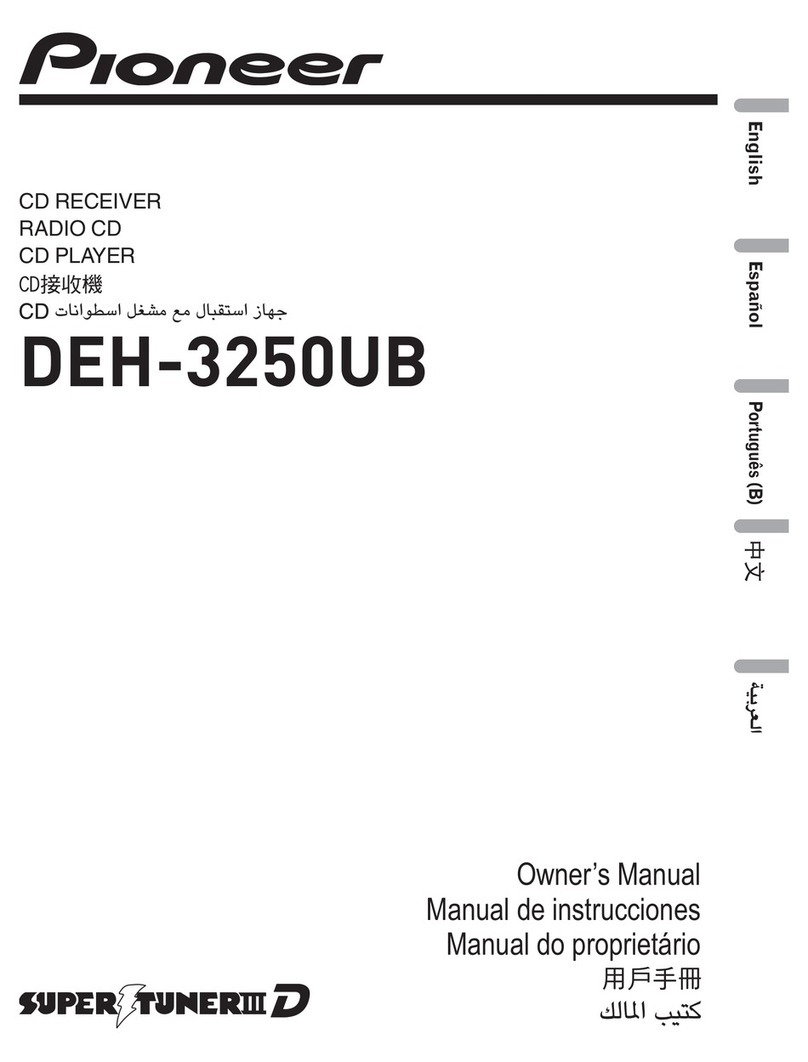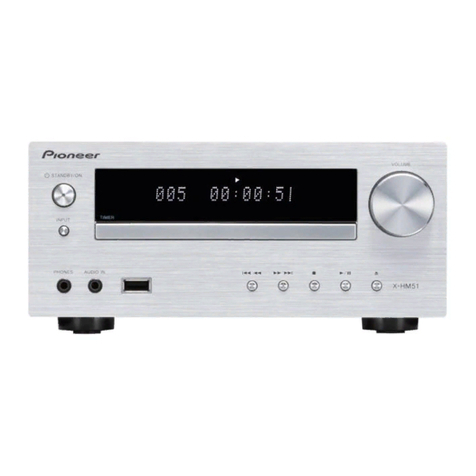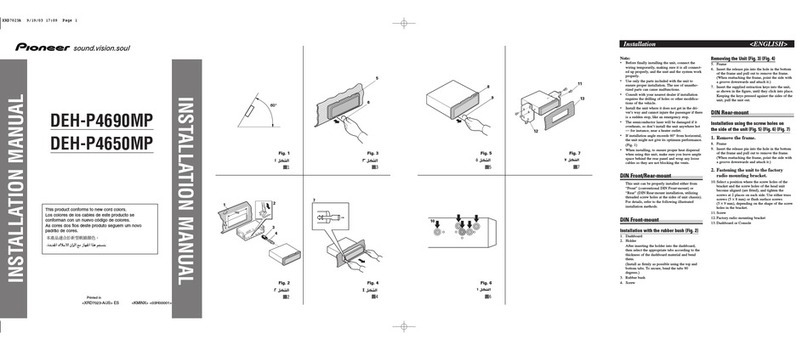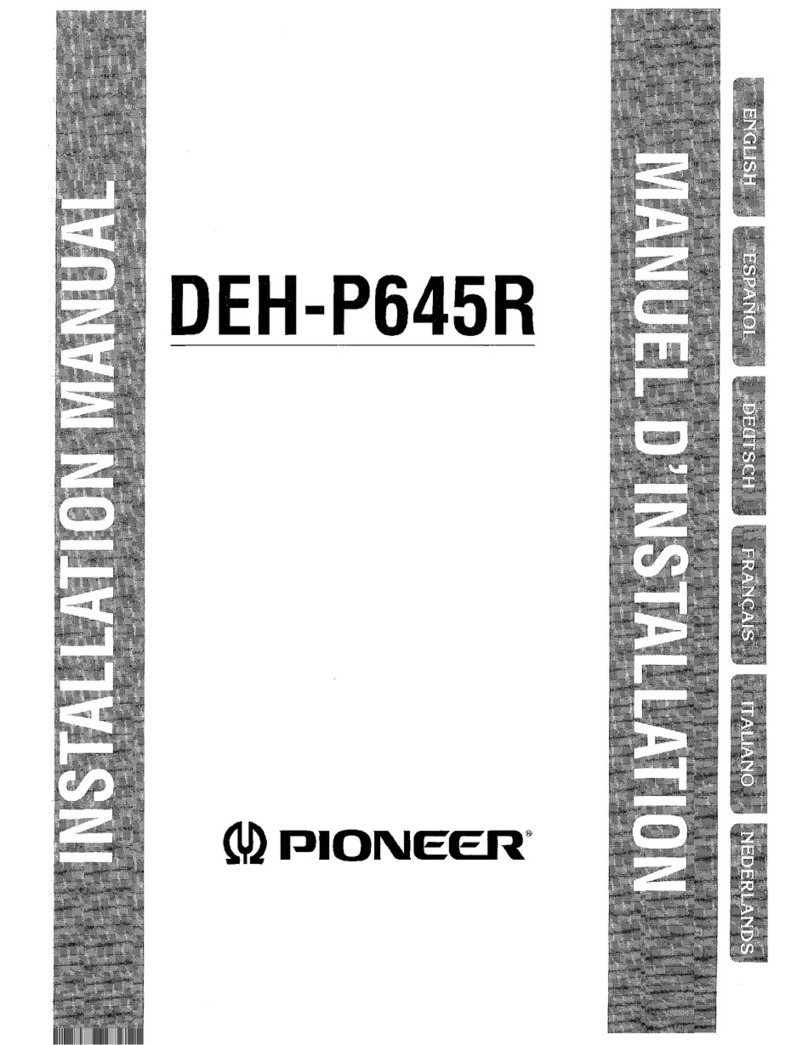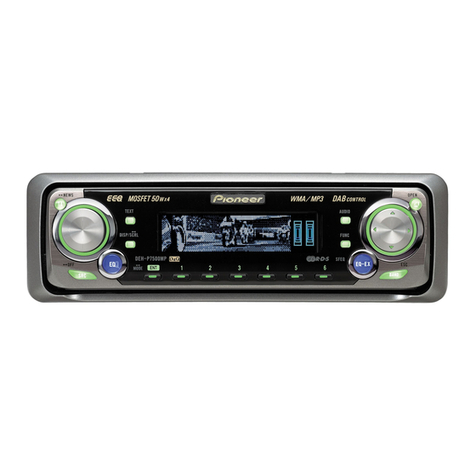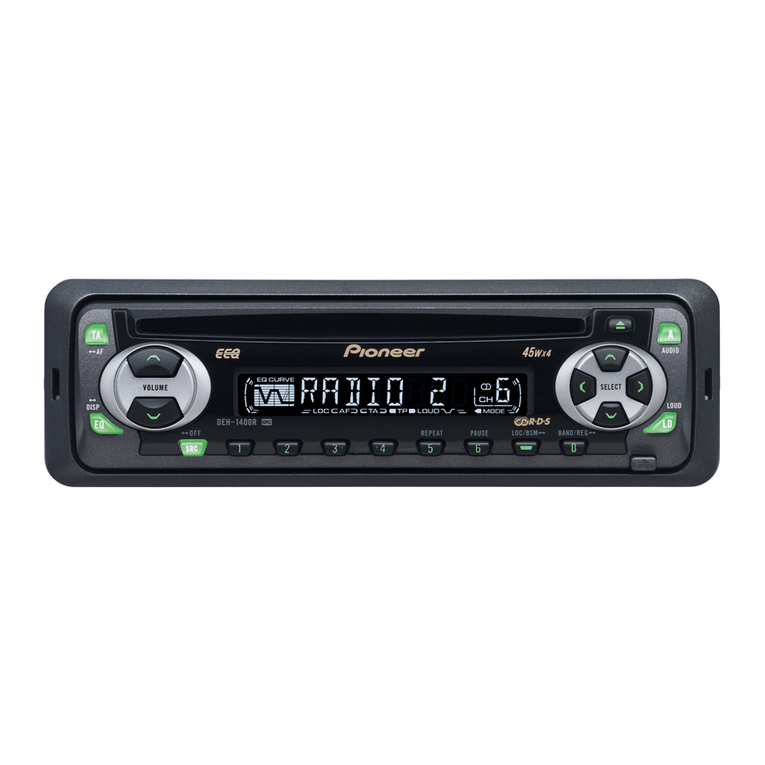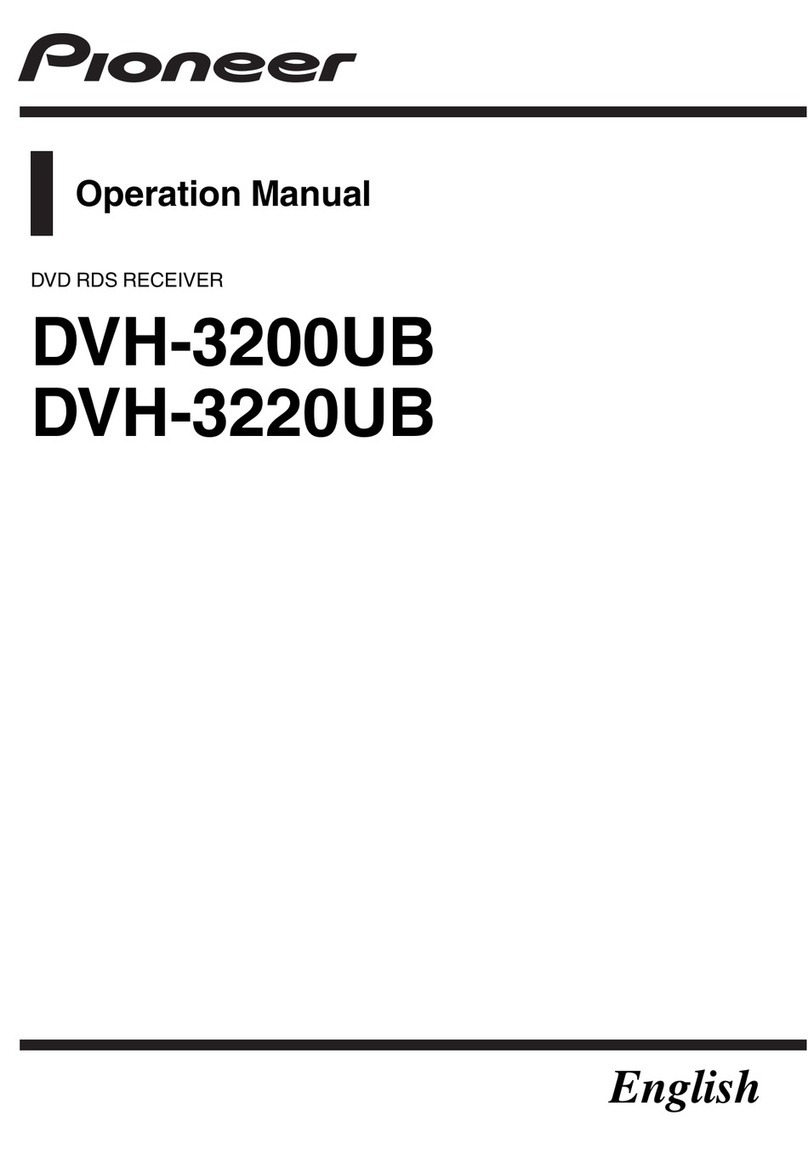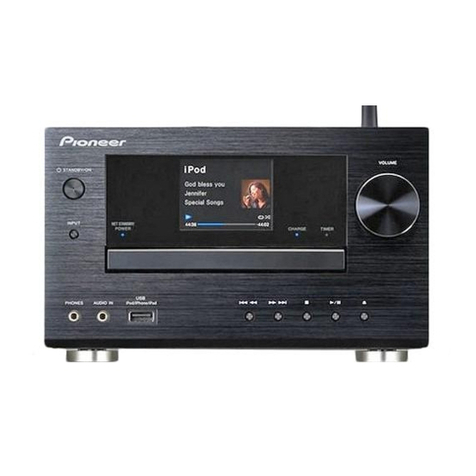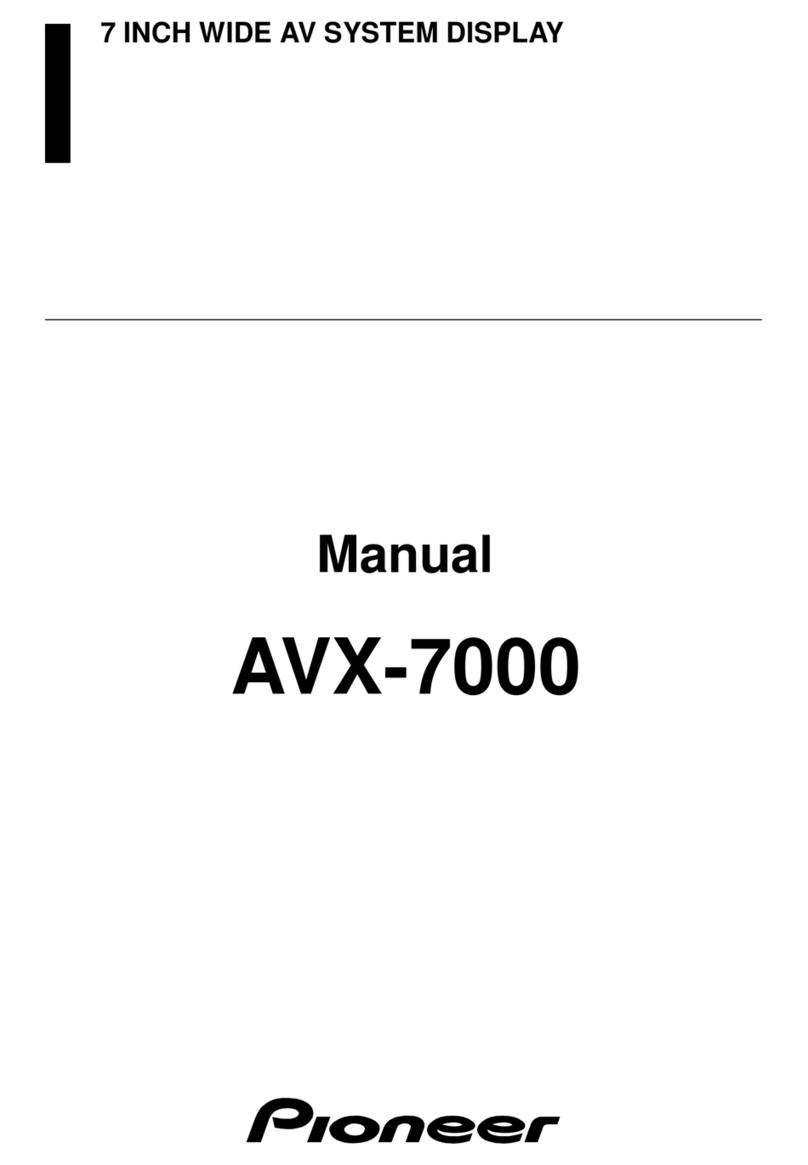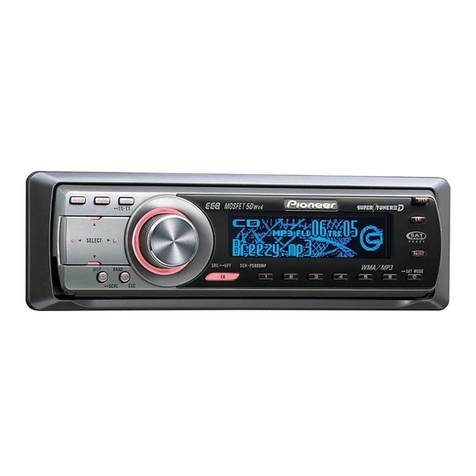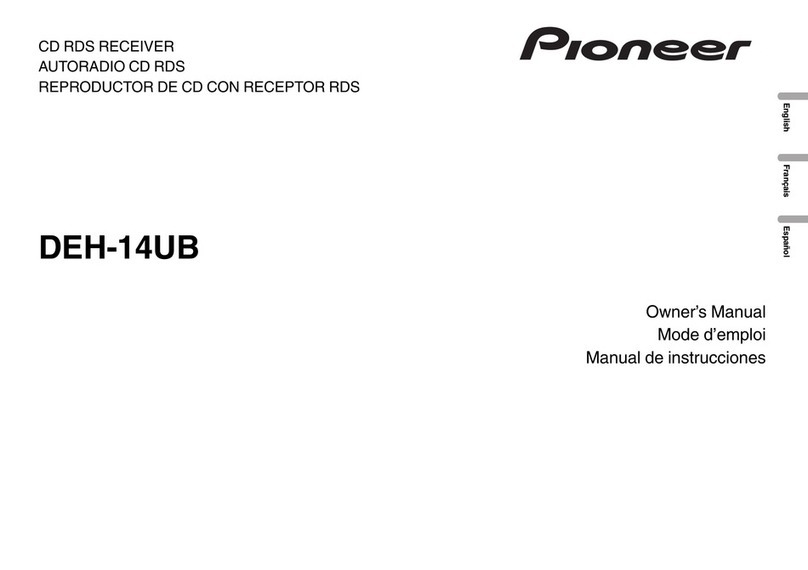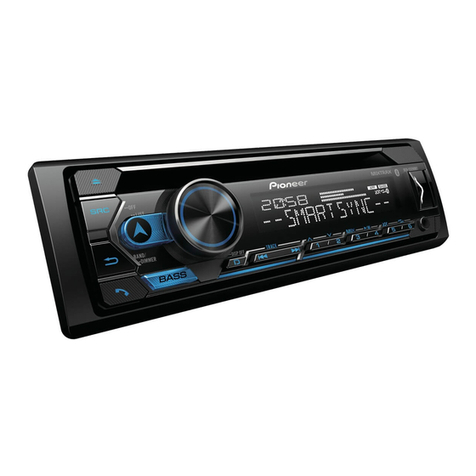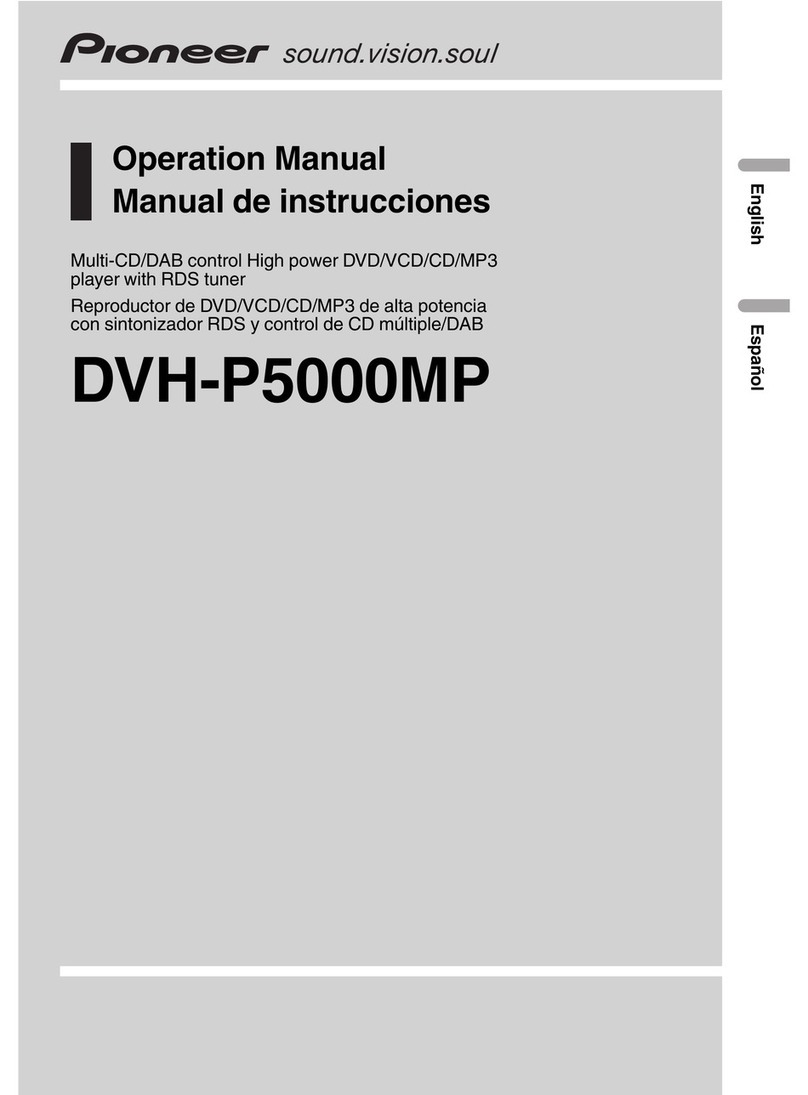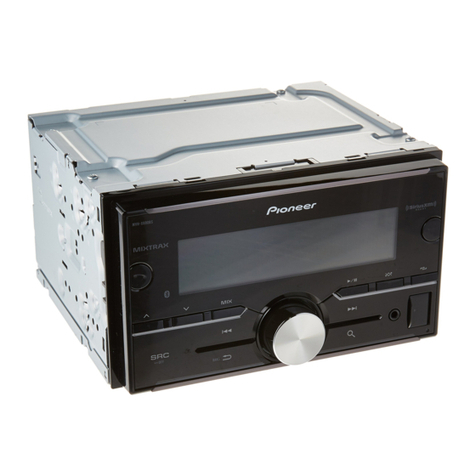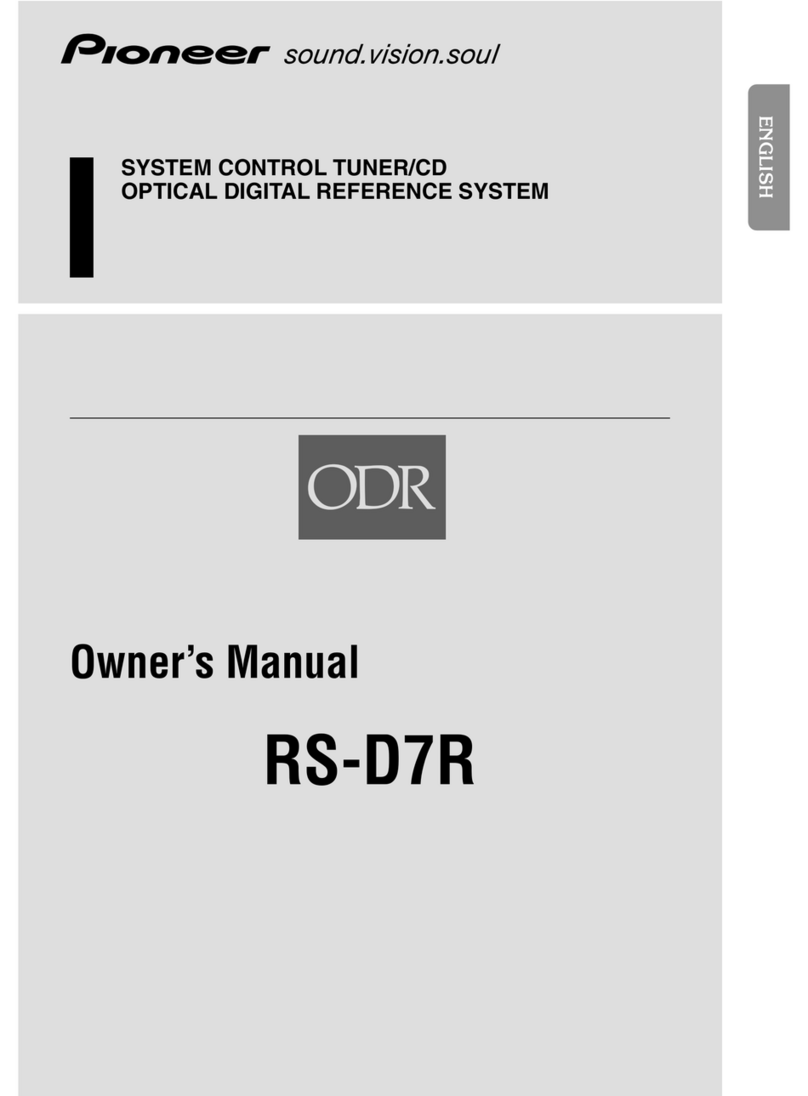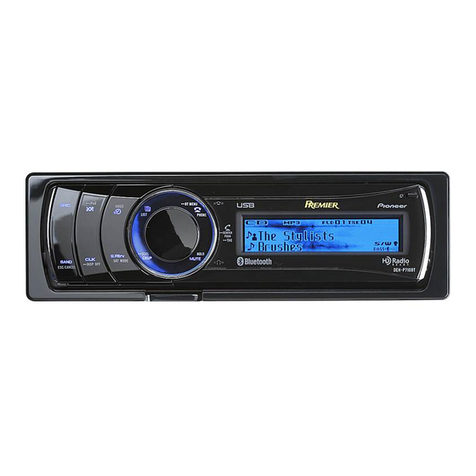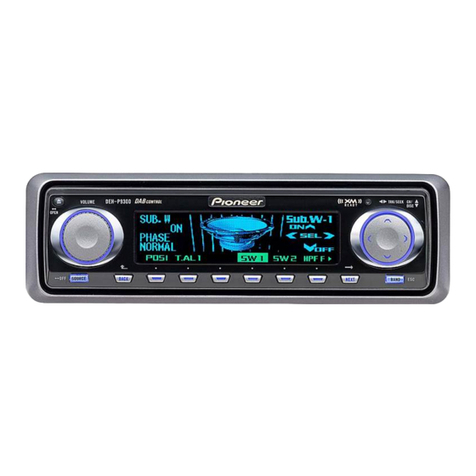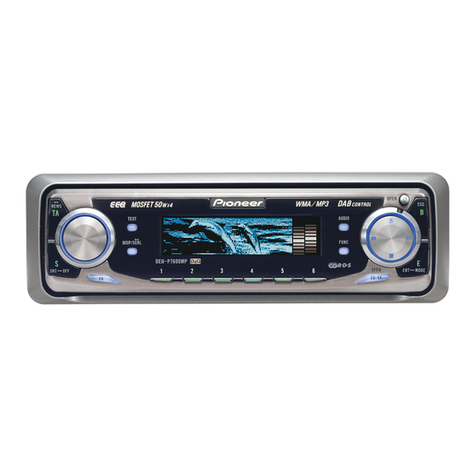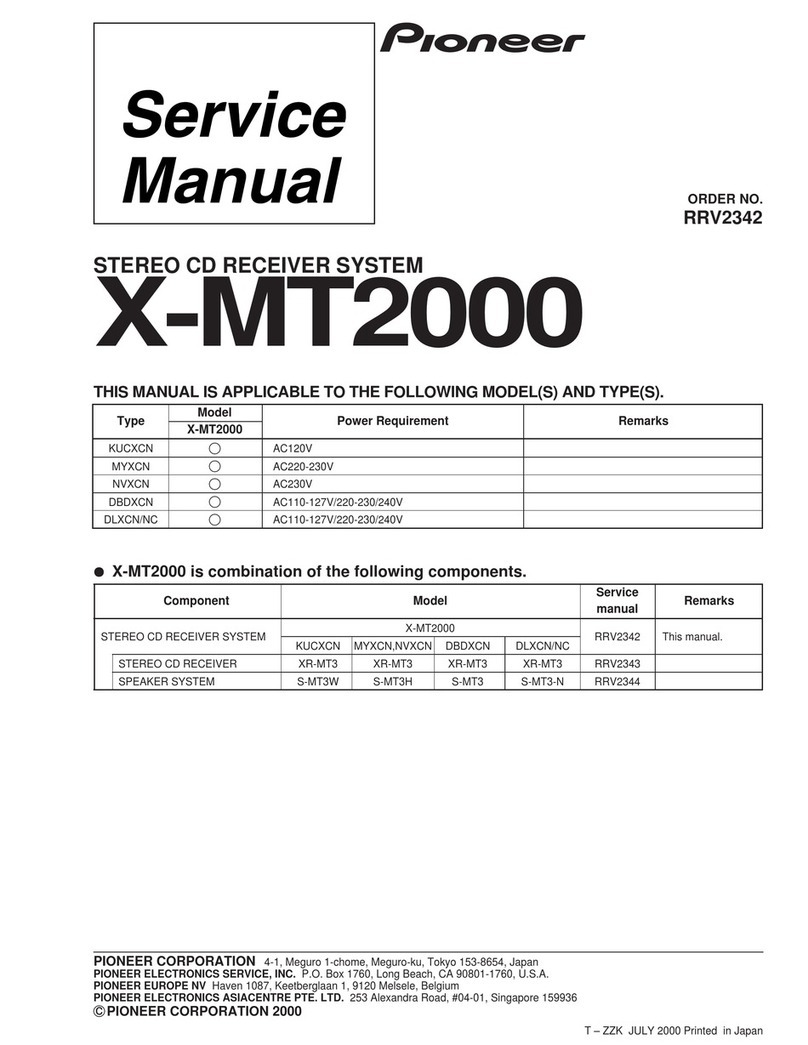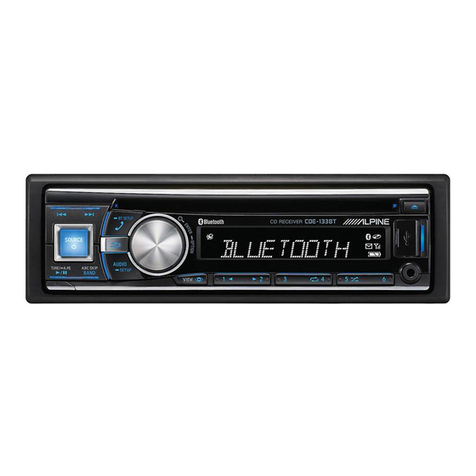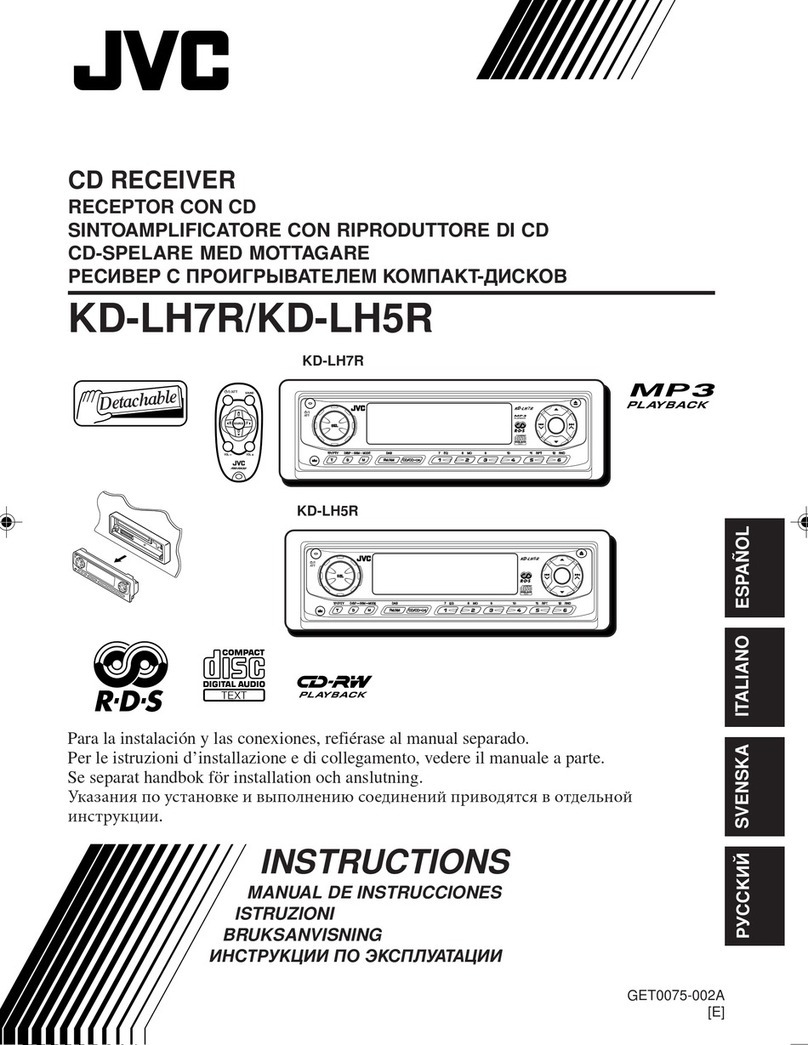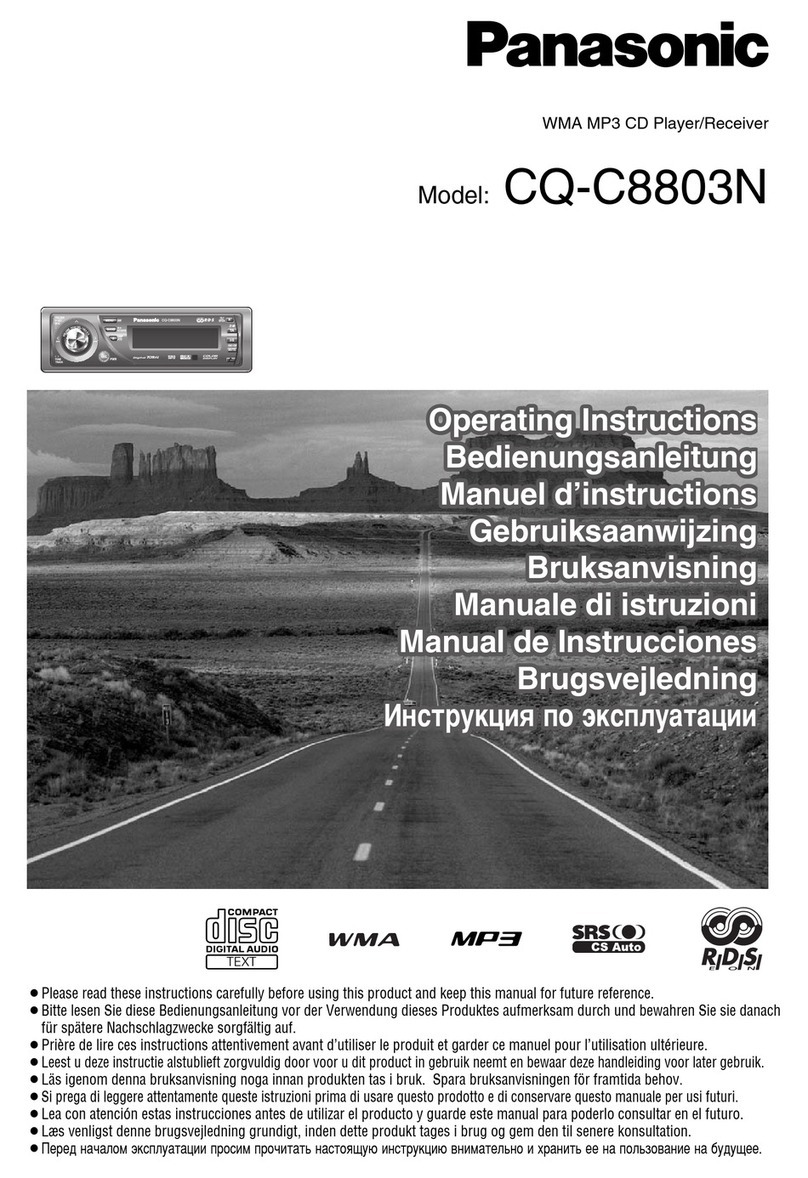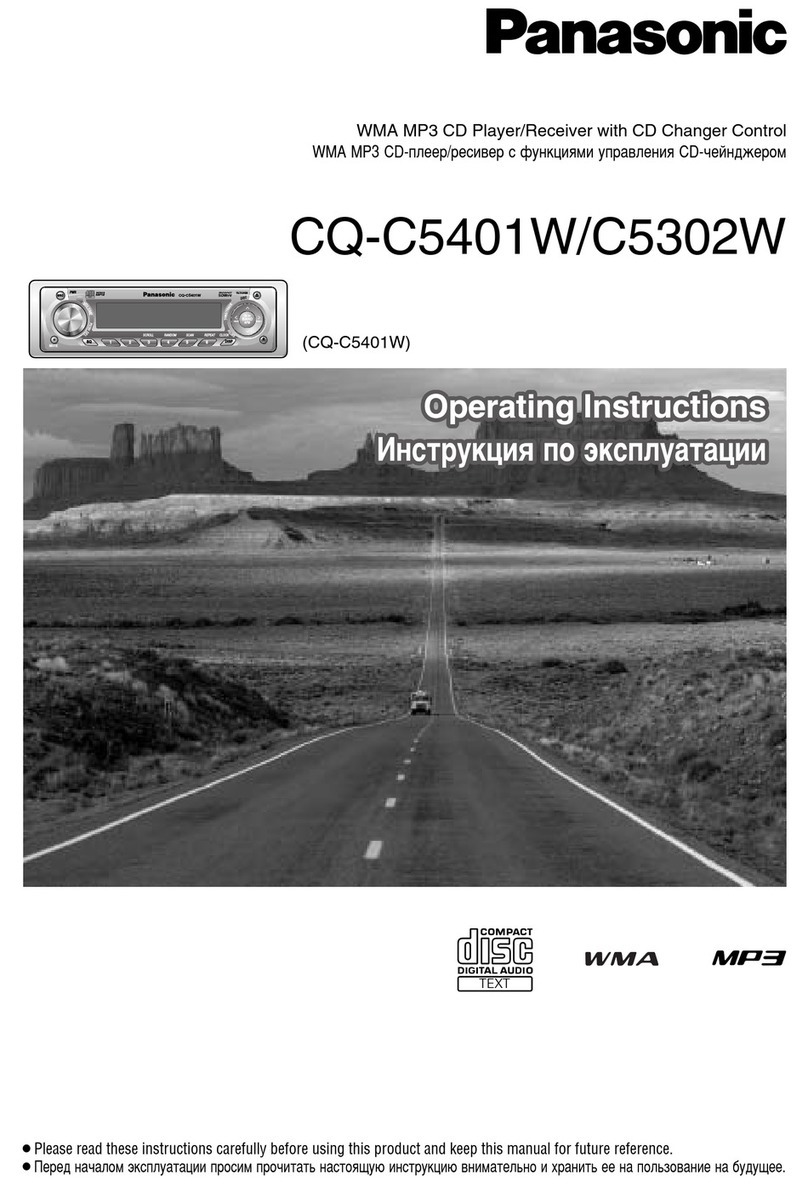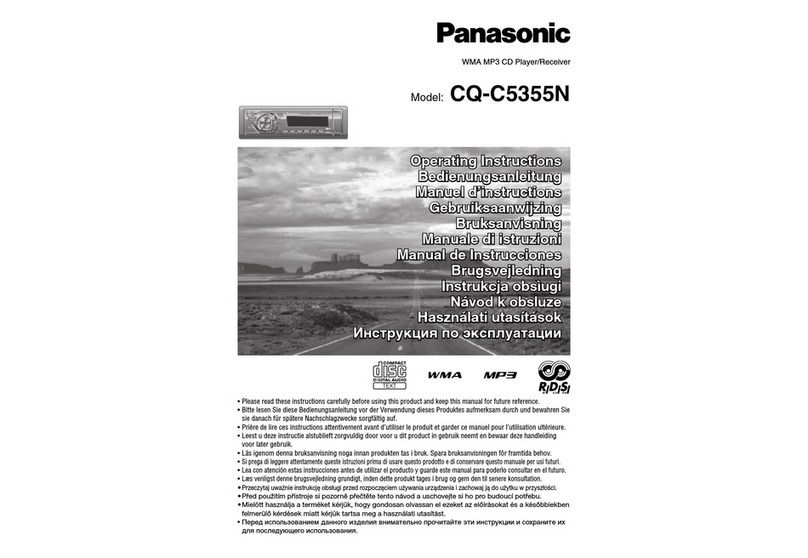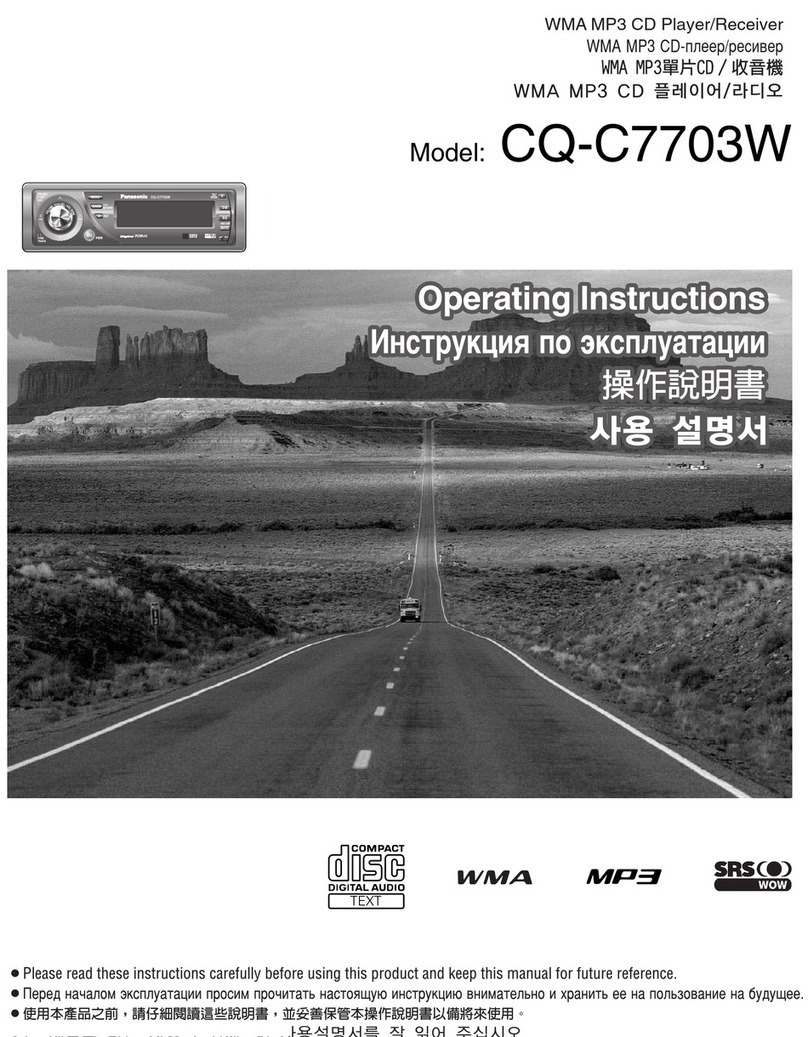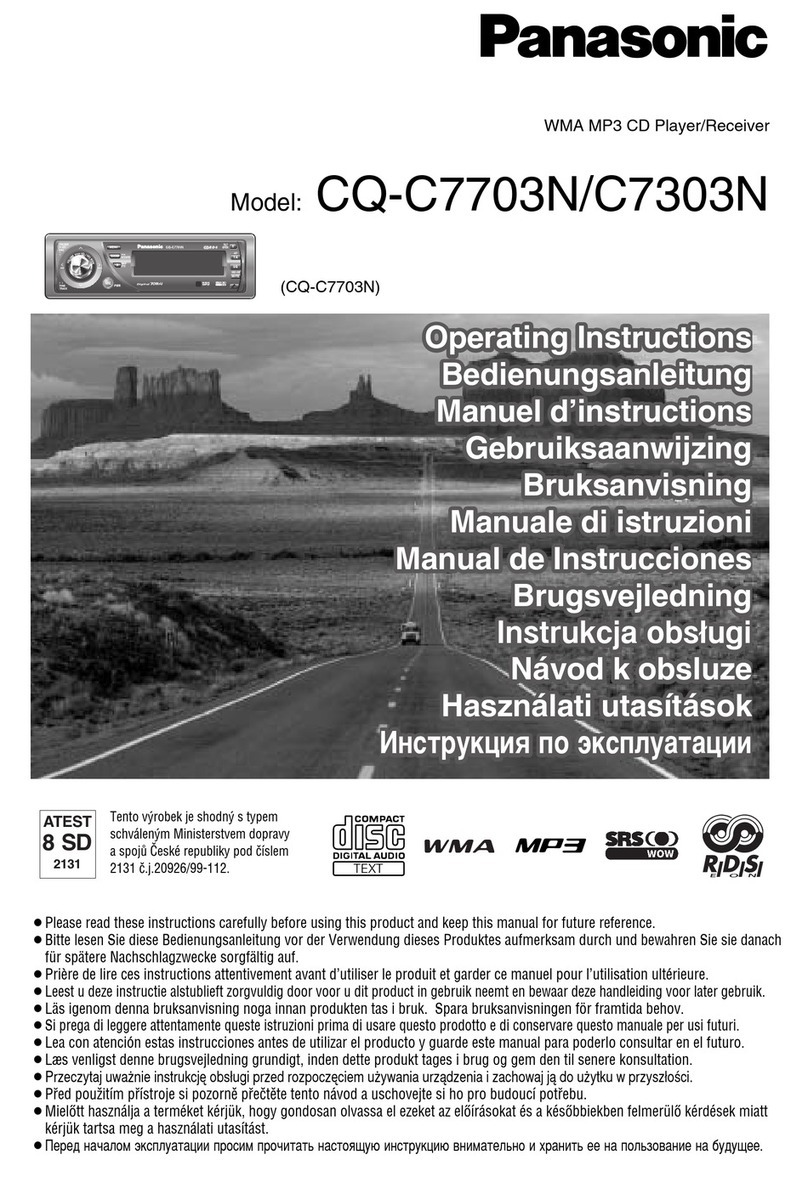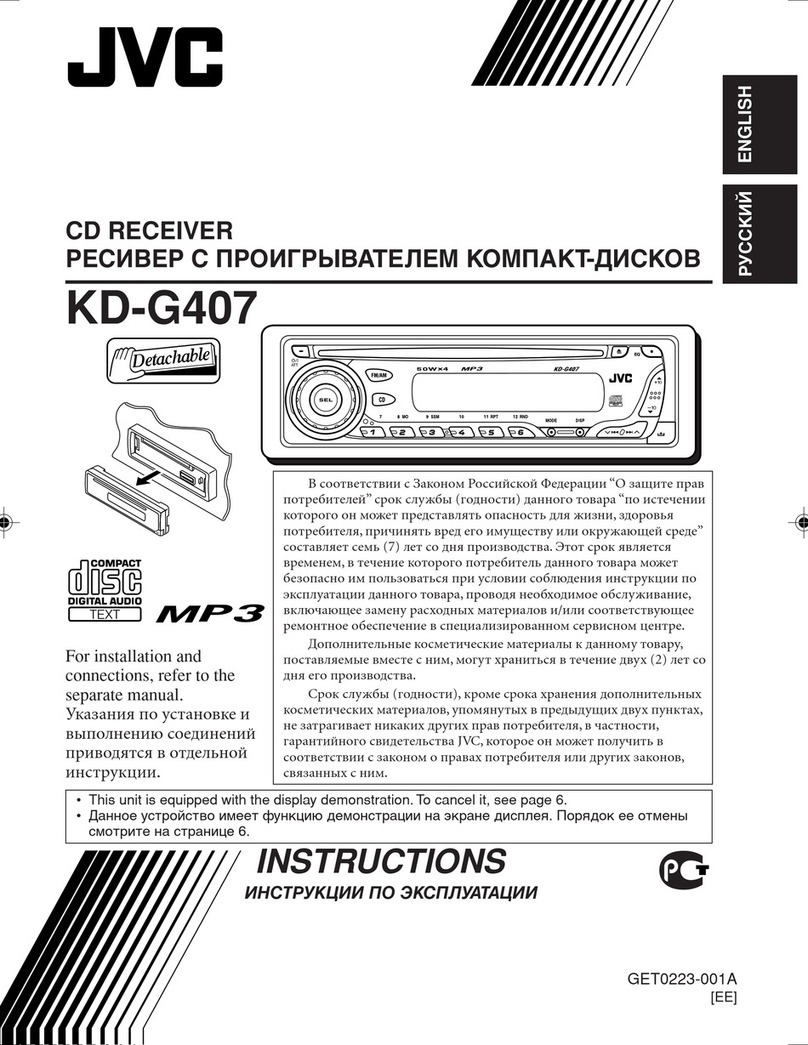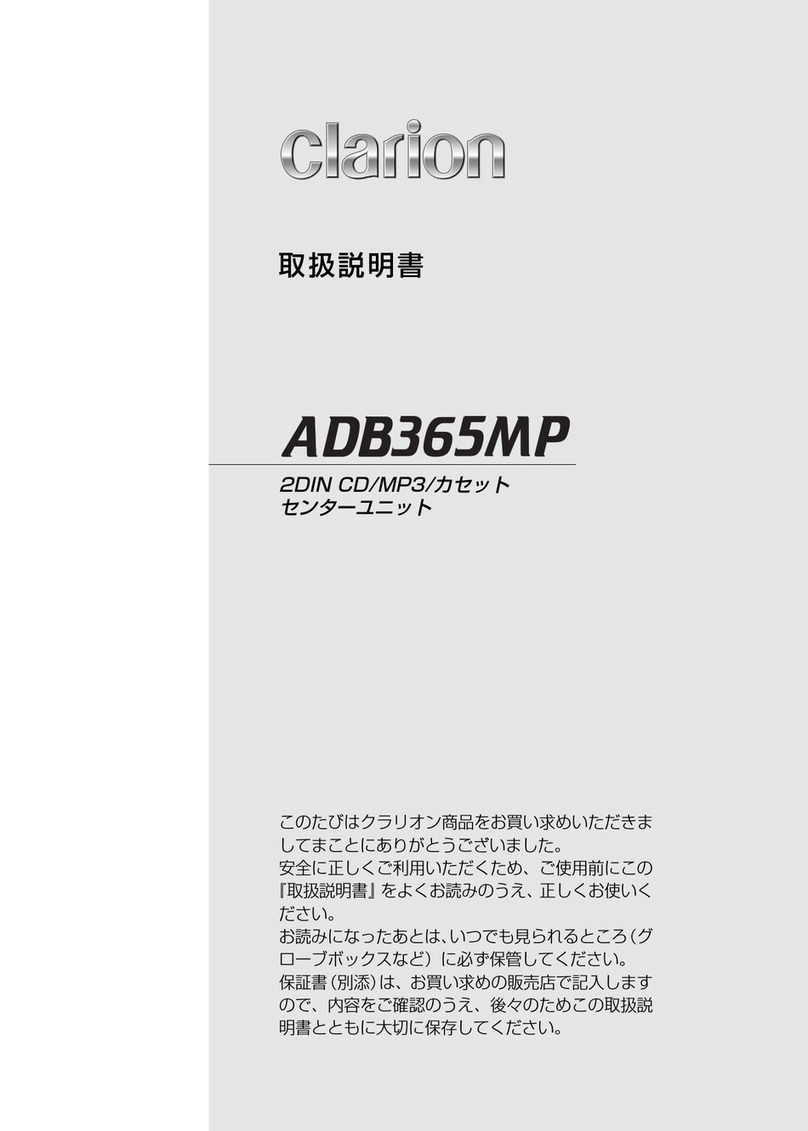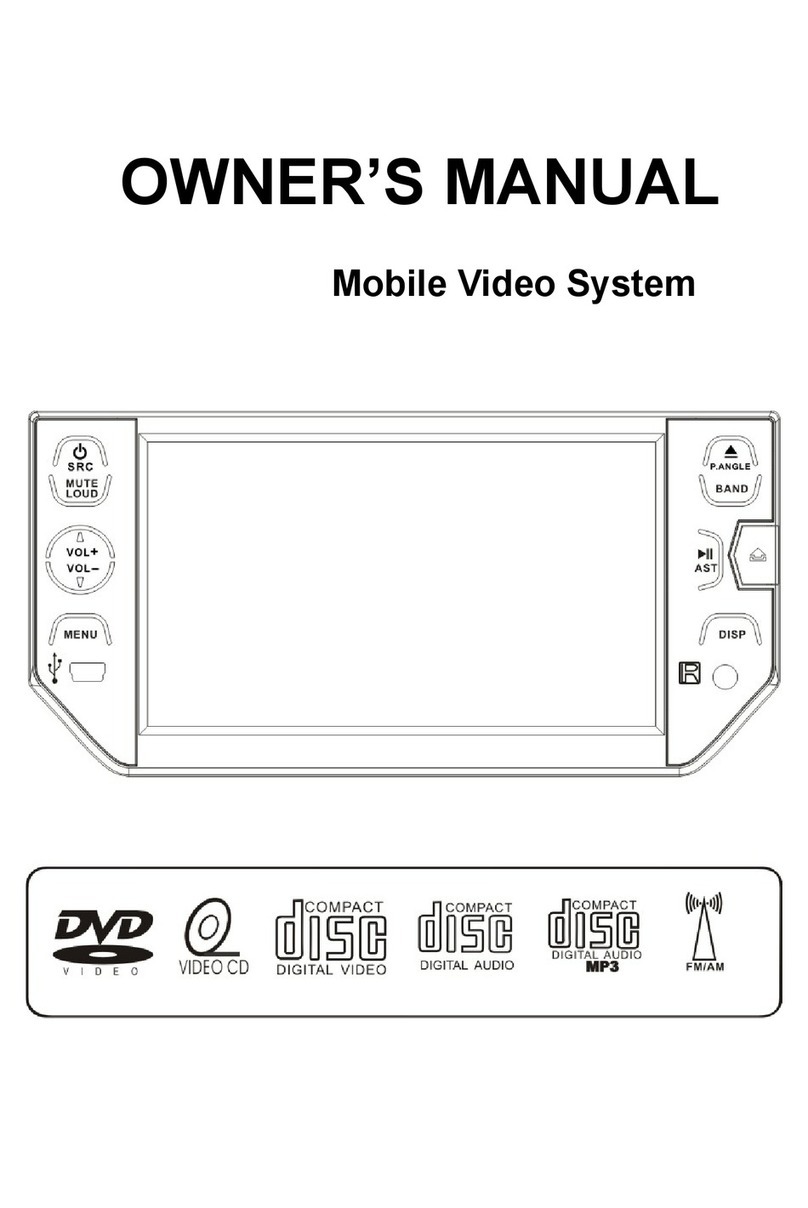•Antes de montar la antena, compruebe la ubi-
caciónde la unidad que va aconectar ala antena,
yasegúrese de que se encuentra suficientemente
cerca del cable de antena para que alcance.
(Longitud de cable de antena: 6 m)
•Nunca instale sobre una antena de vidrio ocables
de calentamiento.
•Fijela antena firmemente, yno utilice si se pone
floja. Si la antena cae, las puntas de los elementos
pueden dañarse.
•Despuésde instalar, asegúrese de que los niños no
jueguen con la antena, ya que esto puede ser peli-
groso.
7Ejemplo 1: Montando a una ventana
trasera (Fig. 4)
1. Bridas
7Ejemplo 2: Montando sobre una ven-
tana de lado trasero (Fig. 5)
1. Bridas
7Ejemplo 3: Montando a una ventana de
compuerta trasera (Fig. 6)
1. Seccióndel amplificador de refuerzo
2. Cuando monte sobre una ventana de
compuerta trasera, utilice bridas en
donde sea necesario para asegurar que
el cable no sea estirado, ni ocasione
obstrucciones cuando se abre ocierra la
compuerta.
Nota:
•Noinstale con los elementos de la antena juntos
ya que eso reduce la sensibilidad de recepción.
1. Decida sobre la ubicación para el
cuerpo principal. (Fig. 7)
Cuando se fijasobre el cuerpo principal,
asegúrese de que hay un espacio de 20 mm
omásentre el borde de la ventana ylos
elementos de la antena.
1. Seccióndel amplificador de refuerzo
Decida sobre una ubicaciónadecuada
para el montajeantes de quitar el papel
de protección.
2. Elemento de antena
2. Quite la suciedad y aceite desde la
ventana con el limpiador. (Fig. 8)
•Aplique el limpiador suministrado aun paño
de limpiezaylimpie, aplicando poca presión.
•Cuando el limpiador se haya secado en
blanco, limpie quitando con un pañohumede-
cido ylimpio.
•Seque completamente con otro pañolimpio.
1. Vidrio de ventana
3. Montaje del cuerpo principal. (Fig. 9)
1. Retire el papel protector ypegue.
2. Seccióndel amplificador de refuerzo
4. Fije los soportes al elemento de
antena. (Fig. 10)
Enel montajede la antena, fijeun soporte
acada elemento para asegurar que no
quede espacio entre la luna ylos elementos
de la antena.
1. Elemento de la antena
2. Soporte
5. Fijación de los elementos de la ante-
na a una ventana. (Fig. 11)
Pegue sobre la bobina de carga, seguido
por los soportes ypartes superiores de la
antena en orden. Confirme que la antena
esté rectamente pegada, con un espacio de
20 mm omásentre el borde de la ventana
ylos elementos de la antena.
1. Seccióndel amplificador de refuerzo
2. Bobina de carga
3. Soporte
4. Parte superior de la antena
6. Adherencia del sello a la parte
externa de la ventana. (Fig. 12)
Adhiera el sello de manera que oculte la
parte adhesiva de la seccióndel amplifi-
cador de refuerzo.
1. Quite la humedad, polvo, suciedad y
grasa de la parte donde va apegar el
sello.
2. Sello
3. Quite el papel protector ypéguelo.
Caliente el vidrio de la ventana
cuando la temperatura del aire se
encuentre baja.
Para evitar una reducciónen la resistencia adhe-
siva, active el calefactor oel desempañador
trasero del automóvil para calentar el vidrio a
una temperatura de 20°Comás.
Nota:
•Antes de la instalaciónfinal de la unidad, conecte
provisionalmente el cableado para confirmar que
las conexiones son correctas yel sistema funciona
satisfactoriamente.
•Utilice solamente las partes incluídas con la
unidad para asegurar una instalaciónadecuada. El
uso de partes no autorizadas puede ocasionar fal-
las de funcionamiento.
•Si la instalaciónrequiere del taladrado de orificios
uotras modificaciones del vehículo, consulte con
su agente oconcesionario máscercano asu domi-
cilio.
•Instale la unidad en donde no interfiera con el
conductor yno pueda lesionar al pasajero en caso
de una parada repentina, tal como una frenada de
emergencia.
•Cuando monte esta unidad, cerciórese que ninguno
de los cables queda aprisionado entre esta unidad
yaccesorios opartes metálicas circundantes.
•Nomonte esta unidad cerca de la salida del cale-
factor, en donde podríaser afectado por el calor o
cerca de las puertas, en donde la lluvia podría
salpicar sobre la misma. (Para evitar el riego de
fallos de funcionamiento producidos por las altas
temperaturas, evite la instalaciónen los lugares
arriba.)
•Antes de taladrar cualquier orificio de montaje
siempre compruebe lo que hay detrásen donde
desea taladrar los orificios. Notaladre en la línea
de combustible, cableado eléctrico uotras partes
importantes.
•Si esta unidad es instalada en el compartimiento
de pasajeros, fíjela seguramente de modo que no
se desprenda mientras el automóvil se encuentra
en movimiento, ypueda ocasionar lesiones oacci-
dentes.
•Si esta unidad se instale bajoun asiento delantero,
cerciórese de que no obstruye el movimiento del
asiento. Pase todos los cables yconductores
cuidadosamente atravésde los mecanismo
deslizantes, de modo que no queden aprisionados
oatrapados en el mecanismo yocasionen un corto
circuito.
Conmutación del modo de
operación (Fig. 1)
Antes de la instalación, usando un
destornillador de punta plana, cambie la
posicióndel interruptor del modo de
operaciónsituado en esta unidad ala ade-
cuada para el componente que usted está
utilizando.
Instalación de la unidad (Fig. 2)
Pegue la cinta Velcro (suministrada) sobre
la parte inferior de la unidad oculta-alejada
ypegue la cinta Velcro blanda (suministra-
da) sobre el sitio de instalación.
1. Esta unidad
2. Cinta Velcro (dura)
3. Cinta Velcro (blanda)
4. Alfombra del automóvil ochasis
Nota:
•La instalacióndirecta sobre la alfombra es posible
si la cinta Velcro dura puede adherirse ala alfom-
bra. Eneste caso, no utilice cinta Velcro blanda.
•Limpie completamente la superficie antes de fijar
la cinta adherente oVelcro.
Instalación del sensor remoto
(Fig.3)
•Nolo instale en el tablero de instrumentos donde
pueda quedar expuesto ala luz directa del sol. Las
altas temperaturas pueden causar dañoala unidad.
•Instálelo dentro de la gama de transmisiónde la
señal.
Adhiera la cinta de doble adherencia al
dorso del sensor remoto, ysujételo ala
consola central.
1. Sensor remoto
2. Cinta de doble adherencia
Instalación de la unidad de antena
Nota:
•Monte la antena en el interior del automóvil sobre
las ventanas fijas tales como ventanas traseras o
ventanas de compuerta trasera.
•Para asegurar una recepciónóptima, se recomien-
da que monte la antena de TV sobre una ventana
trasera (compuerta trasera) apuntando hacia abajo
como se muestra en la Fig. 4, Fig. 5 yFig. 6.
•Montando la antena cerca de una antena de radio
(particularmente del tipo con refuerzo) resultará
en ruidos. Eneste caso, consulte su revendedor
con respecto ala ubicaciónde montaje.
•Si la antena se monta cerca de una antena de
radio, la calidad de la recepciónpuede ser afecta-
da durante la recepciónsimultánea de emisoras de
TV y radio.
•Puede no llegar amontar la antena sobre las ven-
tanas de un cierto tamaño. Asegúrese de elegir
una ventana que sea suficientemente grande.
(Longitud de elemento de antena: 40 cm)
Instalación <ESPAÑOL>
Note:
•Before making afinal installation of the unit, tem-
porarily connect the wiring to confirm that the
connections are correct and the system works
properly.
•Use only the parts included with the unit to ensure
proper installation. The use of unauthorized parts
can cause malfunctions.
•Consult with your nearest dealer if installation
requires the drilling of holes or other modifica-
tions of the vehicle.
•Install the unit where it does not get in the dri-
ver’sway and cannot injure the passenger if there
is asudden stop, like an emergency stop.
•When mounting this unit, make sure none of the
leads are trapped between this unit and the sur-
rounding metalwork or fittings.
•Do not mount this unit near the heater outlet,
where it would be affected by heat, or near the
doors, where rainwater might splash onto it.
(Never install in locations such as the above
because of the danger of malfunction due to high
temperatures.)
•Before drilling any mounting holes always check
behind where you want to drill the holes. Do not
drill into the gas line, brake line, electrical wiring
or other important parts.
•Ifthis unit is installed in the passenger compart-
ment, anchor it securely so it does not break free
while the car is moving, and cause injury or an
accident.
•Ifthis unit is installed under afront seat, make
sure it does not obstruct seat movement. Route all
leads and cords carefully around the sliding mech-
anism so they do not get caught or pinched in the
mechanism and cause ashort circuit.
Switching the operation mode
(Fig. 1)
Before installing, use athin standard
tip screwdriver to switch the operation
mode switch on this unit to the appro-
priate position for the component you
are using it with.
Installing the Unit (Fig. 2)
Adhere the hard Velcro tape (provided)
to the bottom of the hide-away unit
and adhere the soft Velcro tape (pro-
vided) to the installation location.
1. This unit
2. Velcro tape (hard)
3. Velcro tape (soft)
4. Car mat or chassis
Note:
•Direct installation on the carpet is possible if the
hard Velcro tape will adhere to the carpet. Do not
use the soft Velcro tape in this case.
•Thoroughly wipe off the surface before affixing
the velcro tape.
Installing the remote sensor (Fig. 3)
•Do not install on the dashboard where it may be
subjected to direct sunlight. High temperatures
may result in damage to the unit.
•Install within the transmission range of the remote
control signal.
Stick the supplied double-sided tape to
the back of the remote sensor, and
attach it to the center console.
1. Remote sensor
2. Double-sided tape
Installing the Antenna unit
Note:
•Mount the antenna on the inside of the car on
fixed windows such as rear windows or hatchback
windows.
•To assure optimum reception, it is recommended
you mount the TV antenna on arear (hatchback)
windows pointing down as shown in the Fig. 4,
Fig. 5 and Fig. 6.
•Mounting the antenna near aradio antenna (par-
ticularly abooster type) will result in noise. In
this case, consult your dealer concerning mount-
ing location.
•Ifthe antenna is mounted near aradio antenna,
reception quality may be effected during simulta-
neous reception of TV and radio broadcasts.
•You may not be able to mount the antenna on
windows of certain size, Be sure to select awin-
dow that is large enough. (Antenna element
length :40 cm)
•Before mounting the antenna, check the location
of the unit you are going to connect the antenna
to, and make sure it is near enough for the anten-
na cable to reach. (Antenna cable length: 6 m)
•Never install on top of aglass antenna or heating
wires.
•Secure the antenna firmly, and do not use if it
comes loose. Ifthe antenna falls down, the tips of
the elements may cause injury.
Installation <ENGLISH>
•After installing, make sure children don’tplay
with it as it may result in unexpected injury.
7Example 1: Mounting on a rear
window (Fig. 4)
1. Clamps
7Example 2: Mounting on a rear side
window (Fig. 5)
1. Clamps
7Example 3: Mounting on a hatchback
window (Fig. 6)
1. Clamps
2. When mounting on ahatchback win-
dow, use clamps where necessary to
assure the cable is not stretched or does
not cause an obstruction when the hatch
is opened or closed.
Note:
•Do not install with the antenna elements together
as this reduces reception sensitivity.
1. Decide on the location for the main
body. (Fig. 7)
When sticking on the main body, make
sure there is aspace of 20 mm or more
between the edge of the window and
the antenna elements.
1. Booster amp section
Decide on asuitable location for
mounting before removing the pro-
tective paper.
2. Antenna elements
2. Remove dirt and oil from the win-
dow with the supplied cleaner.
(Fig. 8)
•Apply the supplied cleaner to aclean cloth
and wipe, applying alittle pressure.
•When the cleaner has dried white, wipe off
with aclean, damp cloth.
•Dry thoroughly with another clean cloth.
1. Window glass
3. Mounting on the booster amp
section (Fig. 9)
1. Remove the protective paper and
stick on.
2. Booster amp section
4. Clipping holders onto the antenna
element. (Fig. 10)
When mounting the antenna, clip on
one holder to each element to assure
there’sno space between the glass and
the antenna elements.
1. Antenna element
2. Holder
5. Sticking antenna elements to a
window. (Fig. 11)
Stick on the loading coil first, followed
by the holders and antenna tops in
order. Make sure the antenna is stuck
on straight, with aspace of 20 mm or
more between the edge of the window
and the antenna elements.
1. Booster amp section
2. Loading coil
3. Holder
4. Antenna top
6. Sticking the seal on the outside of a
window. (Fig. 12)
Stick on the seal so that it hides the
sticky part of the booster amp section.
1. Remove moisture, dust, durt and oil
from where you are going to stick
the seal.
2. Seal
3. Remove the protective paper and
stick on.
Warm the window glass when the
air temperature is low.
To prevent areduction in adhesive strength ON
the car heater or rear deffoger to warm the glass
to atemperature of 20˚Cor more.
